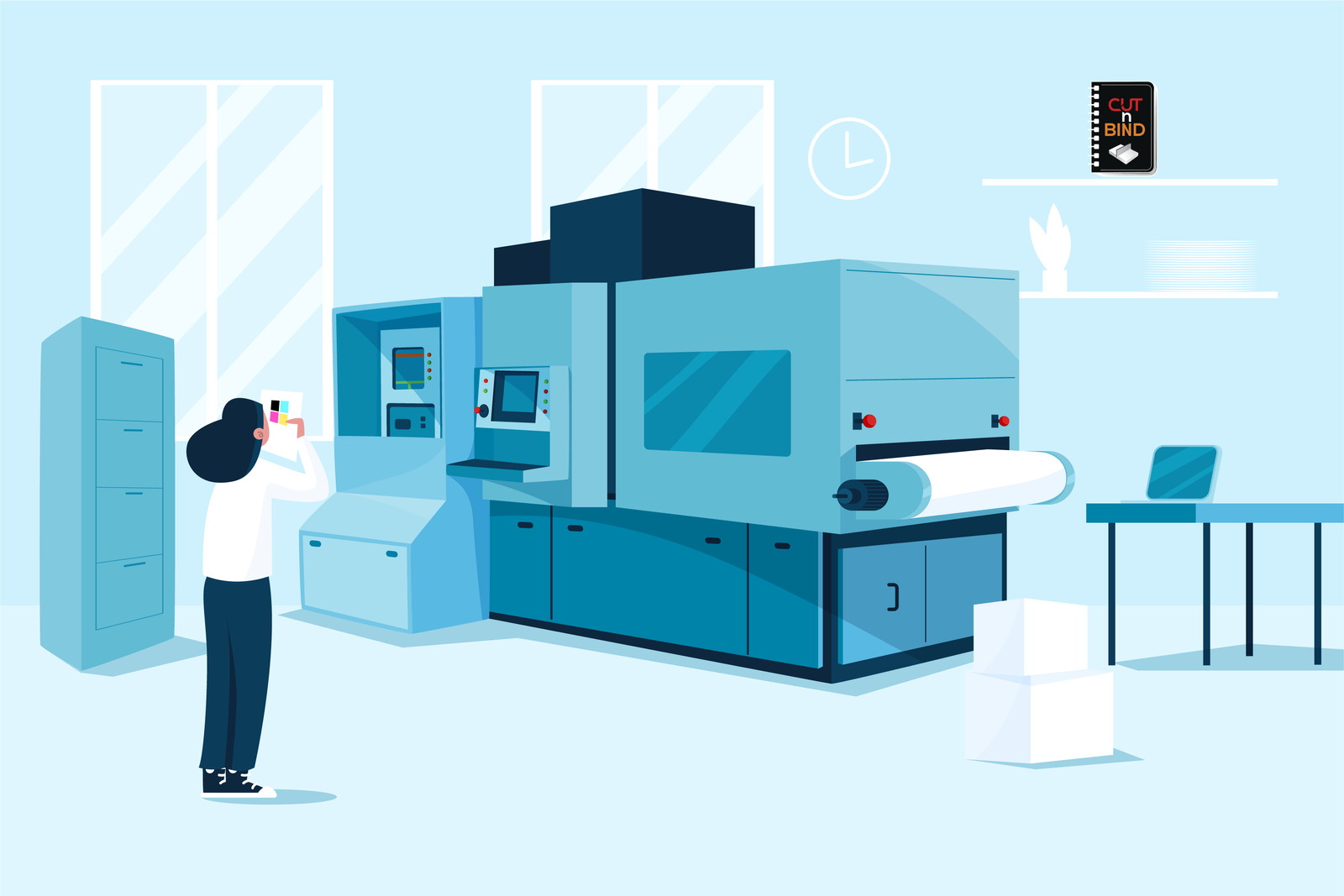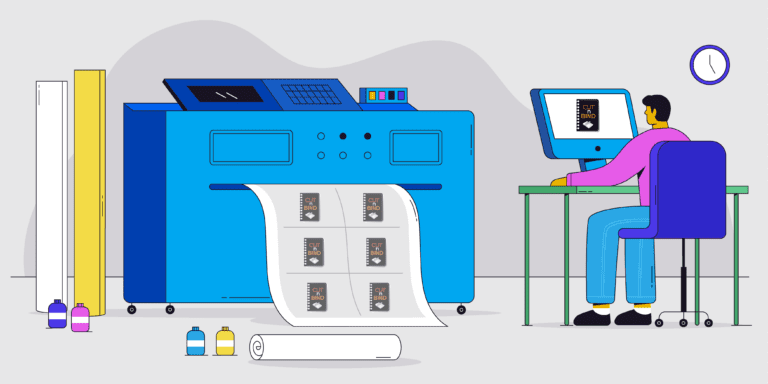How Latest Digital Technology Transforming in Digital Print Finishing Industry – CutnBind

The digital print finishing industry is rapidly changing due to new technology that is making processes faster, smarter, and more efficient. From automated cutting and creasing machines to AI-powered quality control, digital advancements are helping businesses produce high-quality finished prints while saving time and reducing costs. Let's explore how the latest innovations are reshaping the industry.
Here are several points of latest innovations:
- Automation to Complete Tasks More Quickly and Accurately
- AI and Intelligent Technology for Accuracy and Excellence
- Flexible Digital Cutting and Creasing
- Cloud-Based Processes for Increased Productivity
- Sustainable Developments in Print Finishing
1) Automation to Complete Tasks More Quickly and Accurately
Automation is indeed a game-changer when it comes to print finishing. Most of the traditional ways of finishing were done by human hands; hence, the inconsistencies and sometimes slow. Nowadays, automated machines can perform these tasks-like cutting, creasing, folding, and binding-with the highest precision and with very limited human interference. This means companies can finish the job faster and maintain quality standards.
2) AI and Intelligent Technology for Accuracy and Excellence
Artificial Intelligence is making finishing smarter, too. AI-driven systems analyze designs and can automatically detect errors in real time to make adjustments for a perfect result. For example, AI-driven cameras check alignments and color accuracy to make sure each print meets high standards before reaching the customer.
3) Flexible Digital Cutting and Creasing
Modern digital cutting and creasing machines are way more flexible than their traditional versions. Instead of physical dies, these digital machines use laser or automated blade technology to cut and crease the paper or cardstock. This is particularly helpful in short-run jobs and with custom designs; businesses can easily change designs on the run with no additional setup costs.
4) Cloud-Based Processes for Increased Productivity
Cloud technology enables companies to manage print finishing workflow remotely. With cloud-based systems, operators can view machines, make changes in settings, and track production in real time from anywhere. This increases efficiency, reduces downtime, and ensures smooth operations.
5) Sustainable Developments in Print Finishing
Sustainability is becoming the top priority in the printing industry. In fact, all digital finishing machines are designed to be material-wasting reducers and energy consumption reducers. For instance, automated machines help to optimize material usage; the water-based coatings replace traditional chemical-based finishes in a print finishing manner.
What is Digital technology?
Digital technology can be defined as all those electronic tools, systems, devices, and resources that create, store, and process data. Computers, software, the internet, artificial intelligence, automation, and digital communications are some examples. This allows for faster processing, connectivity, and automation of works in most industries, be it print finishing, healthcare, finance, or entertainment.

What are Advantages and Disadvantages of Digital Technology in the Digital Print Finishing Industry?
Digital technology has significantly improved the print finishing industry, making processes faster, more efficient, and cost-effective. However, it also comes with challenges. Below is a breakdown of its advantages and disadvantages.
Advantages:
- Increased Speed & Efficiency – Automation and AI reduce manual labor, speeding up production and improving accuracy.
- Cost Savings – Digital finishing eliminates the need for expensive dies and plates, reducing setup costs.
- Customization & Flexibility – Digital cutting and creasing allow for quick design changes and short-run jobs without extra costs.
- Consistent Quality – AI-driven quality control ensures every print meets high standards, reducing errors and waste.
- Eco-Friendly Options – Digital technology minimizes material waste, reduces energy consumption, and supports sustainable printing.
- Remote Monitoring – Cloud-based systems allow businesses to track and control finishing processes from anywhere.
Disadvantages:
- Dependence on Electricity and Internet – Digital finishing machines rely on power and internet connectivity, making them vulnerable to downtime during outages.
- Limited Texture & Specialty Finishing – Some traditional finishing techniques, like embossing and foil stamping, may not be easily replicated with digital methods.
- Software Compatibility Issues – Not all digital machines work seamlessly with existing software, requiring frequent updates or additional investments in compatible systems.
- Job Reductions in Manual Labor – Increased automation can reduce the need for skilled manual workers, leading to job losses in the industry.
- Shorter Machine Lifespan – Digital technology evolves quickly, making machines obsolete faster, requiring frequent upgrades to stay competitive.
Conclusion
Automation, AI, digital cutting, cloud-based systems, and ecological concerns are changing the face of modern finishing. In such a way, companies can speed up the process, improve the quality of prints, and cut costs thanks to more ecological production. As technology will continue to evolve, moving forward into these innovations will be the way to remain competitive in the print market.
Are you looking for high-quality digital finishing equipment? Visit CutnBind.com for top-rated solutions that can take your print finishing to the next level!











